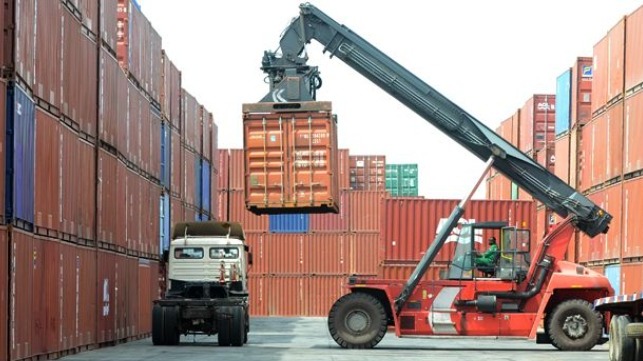The Raging Hub War at West African Ports

There is an investment overdrive in Africa’s maritime sector as governments pursue ambitious port expansion projects. Currently, the African port sector has attracted $15 billion in private investment, and public funding brings the total to $85 billion. With most of this growth funded by mounting levels of debt, the profitability of these projects remains central to their undertaking.
Economists have expressed concern that the expansion of the African port sector has to align with the fact that at most only four ports will take the designation of continental transshipment hubs. It is already apparent which ports will take first place in most regions: Tanger Med and Port Said in North Africa; Djibouti in East Africa; and Durban in South Africa. The question is how governments will avoid the trap of grandiosity in ports expansion and ensure that the investments are wisely executed.
A new report titled “Africa’s Ports; Fast Tacking Transformation” by the Africa CEO Forum and Okan Consulting incisively focused on the issue of looming white elephant projects in the African port sector as multiple countries race to position themselves as regional hubs. The report warned that countries have to be cautious in their ports development plans and clearly define whether the proposed ports are better suited to serve as regional or national hubs. A conservative, step-by-step investment approach would be recommendable for most countries - especially whose ports will not lay claim to the regional hub title – and a primary focus should be on bottlenecks that hinder their operations.
This is especially visible in West Africa, where half a dozen countries are working to outdo each other in a line-up of ambitious ports development projects. Togo’s $380 million head start investment by Terminal Investment Limited saw the expansion of Lomé’ Container port to handle post-panamax vessels and act as a transshipment hub, and it has attracted competition from the neighboring ports. The expansion put it in a good position to serve the region’s other smaller ports without the capacity to handle large vessels, as demonstrated by MSC’s decision to consolidate all its Asia-West Africa volumes at Lomé’ in 2014.
However, most of the ports that Lomé’ was hoping to serve have also received a significant boost in their maritime capacity. The inking of a joint venture between Bollore’ and APM Terminals in 2015 to secure $1.5 billion funding for Ghana’s Tema Port will see it gain a container capacity comparable to that of England’s Felixstowe port.
In addition, Nigeria has recorded significant progress to shift its container shipping operations from Apapa - where the Port of Lagos complex is located - to the all-new Lekki Deep Sea port. The $1.5 billion Lekki port is expected to open for operations in 2023, and it also aims to be a transshipment hub for West Africa. It is designed to receive vessels with a capacity exceeding 18,000 TEU.
In Cote d’Ivoire, the completion of the $930 million Abidjan port expansion project earlier this year by China Harbor Engineering has improved cargo handling capacity. Complete with three container berths, a ro-ro berth and general cargo berth, it will help Cote d’Ivoire to expand its economy.
The construction of a new port in Senegal by DP World, Port du Futur, will have a capacity of one million TEU. It has taken shape as a deal between the port operator and the Senegalese government, and the agreement – which is still being finalized - includes development of the Dakar Integrated Special Economic Zone (DISEZ).
Although time will tell which of the West African ports will emerge as a regional hub, Togo’s Port of Lomé’ continues to take a lead in this race, thanks in part to MSC’s influence at the port. In just six years, the Togolese port has expanded its cargo throughput from 311,000 TEU in 2013 to 1.5 million in 2019, becoming West Africa’s busiest port. However, due to the likelihood of reduction of trade passing through the port and a smaller hinterland to serve as other neighboring ports become competitive, Port of Lomé’ may not be a strong contender for West Africa’s transshipment hub against ports like Abidjan in Cote d’ivore, Nigeria’s Lekki and Tema in Ghana in the near future.
The opinions expressed herein are the author's and not necessarily those of The Maritime Executive.
